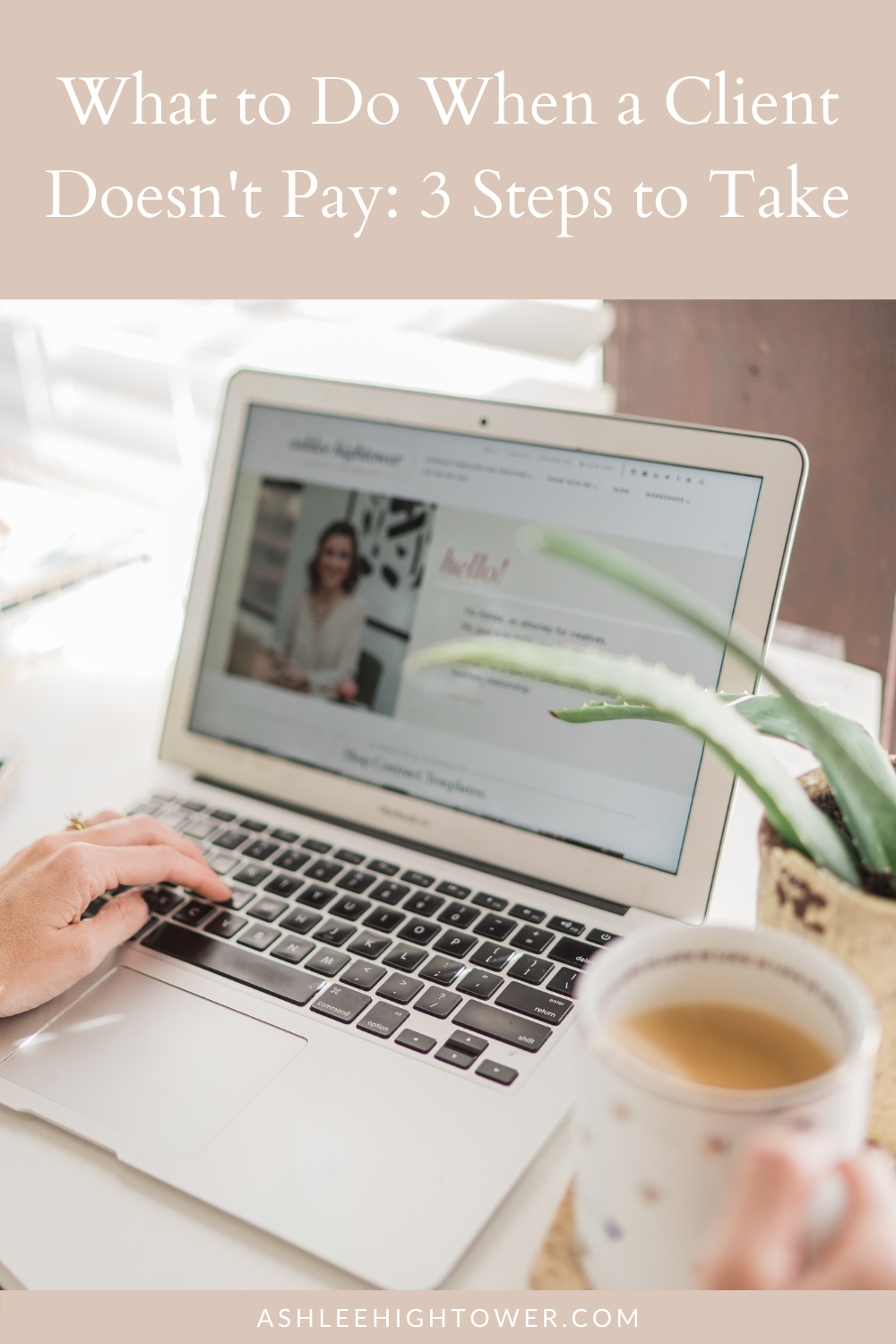Have you ever had a client ghost you? By that, I mean ignore your repeated unpaid invoices and follow-up phone calls, leaving you to when or if you’ll ever get paid for the work you did. If you have ever wondered what to do when a client doesn’t pay, I can help. I’ve got three actions you can take in an attempt to receive payment for your services.

Prior to jumping into action items, these tips assume you have a contract in place with your client. It’s imperative that you have a signed (and dated) contract in place with each and every client for each and every project that you work on. It’s important to have everything laid out and outlined from the beginning, including payment details. With a contract in place, you have something to fall back on when the client fails to make payment.
3 Actions To Take When A Client Doesn’t Pay
Assuming you have already followed up before getting to this stage, it’s time to escalate the situation. Obviously, asking nicely and being patient are not working. However, if you haven’t tried to follow up with your client, I advise doing so before taking further action. Sometimes clients just need a little nudge. The last thing you want to do is alienate your client or earn a negative review for being impatient or not following through.
1. Weigh Your Options.
You need to ask yourself if chasing down the client is worth it. Pursuing a client takes time and money so if the amount is small, it may be best to write it off and refuse future work from the client.
2. Send a Demand Letter.
If the amount is worth pursuing, have an attorney draft a letter. The letter should request payment, remind the client they are late on payment, and explain your intended next steps if payment is not made by a certain date. The next step would usually be taking the dispute to small claims court. Oftentimes, the threat of legal action is enough to get the client to make arrangements for payment, if not pay the entire amount in full.
3. Hire a Collection Agency.
If you want to avoid small claims court, you could hire a licensed collection agency to collect the debt. These professionals have the experience, training, and skills needed to obtain payments without alienating the client and save you from having to pursue and interact with the client yourself.
If you need help with your client contract(s) or are having trouble getting clients to pay you, email me at [email protected] or contact me here for advice.
ALL OF THE INFORMATION PROVIDED IS FOR EDUCATIONAL AND INFORMATIONAL PURPOSES ONLY.








